Project Goals
- Inform employees about the Magnetic Resonance Imaging (MRI) machine and its functions in the organization.
- Facilitate acceptance of new technology by employees in organization
- Provide training for technology users.
- Inform the public about the availability and benefits of the new technology.
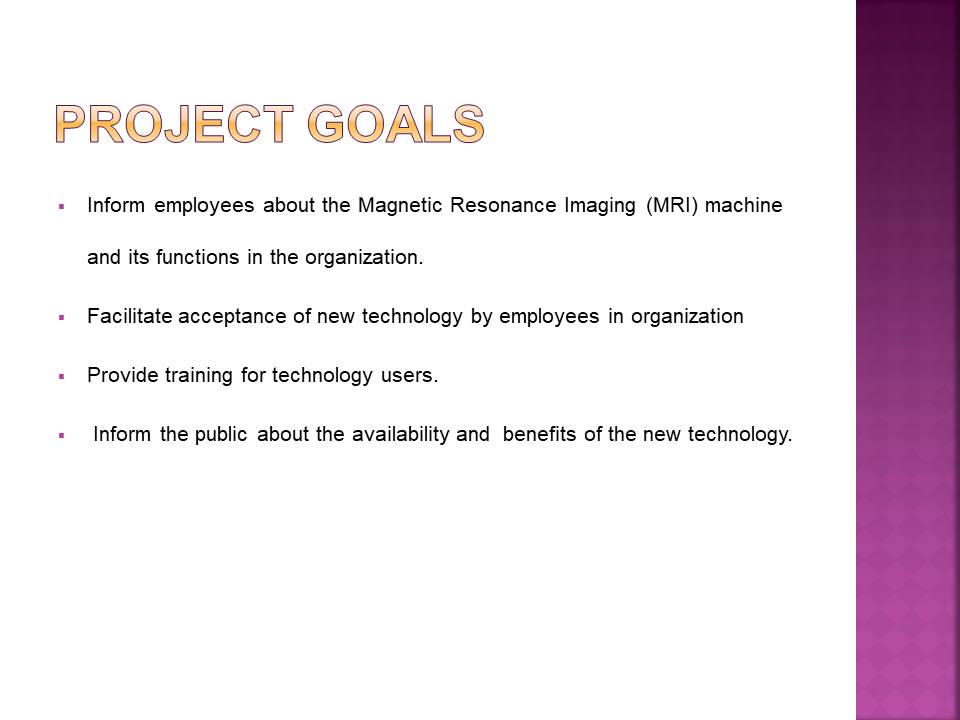
Team Structures
The introduction of the new technology will affect the entire healthcare system. Consequently, team structure for this project will involve upper and middle management as well as employees.
These teams will perform various functions in communicating the new technology to internal and external stakeholders.
The project manager will communicate the new technology to the hospital administrator who will then inform relevant departments (Malcolm and Adrian, 2005).
The public relations department will communicate to the public.

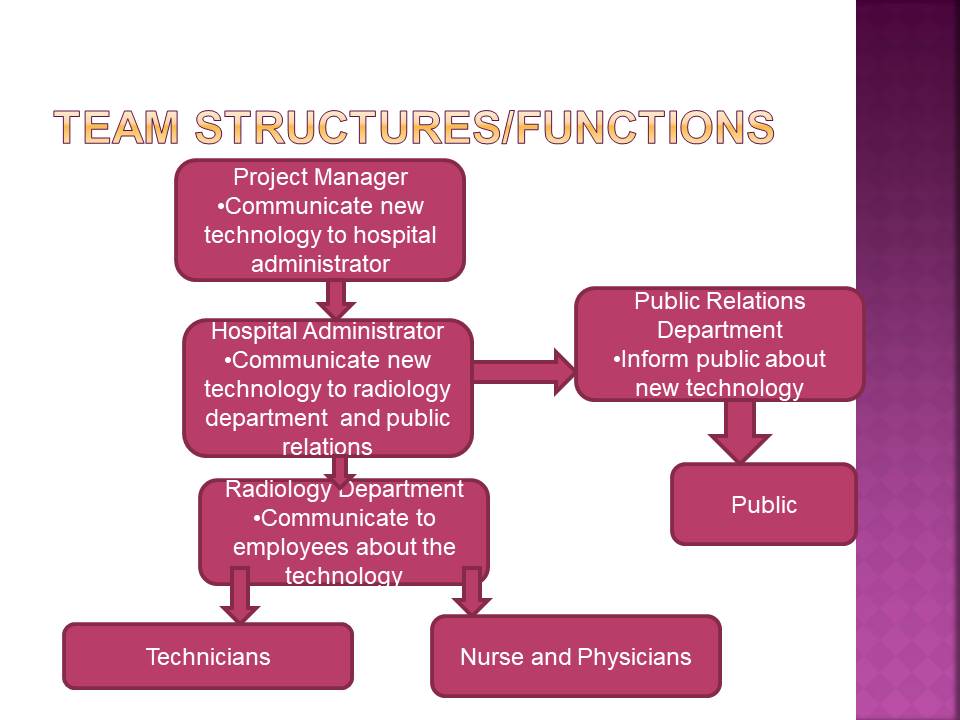
Integration of Teams, Planning and Training
The introduction of new technology will require that teams collaborate in planning and training. Specifically, the project manager will collaborate with the hospital administrator in planning the use of the MRI machine and evaluating training needs in the institution (Malcolm and Adrian, 2005).
The hospital administrator will perform a needs assessment to assist in identification of training requirements for the staff that will use the technology.
The hospital administrator will coordinate with the public relations officer on what to communicate to the public about the new technology.
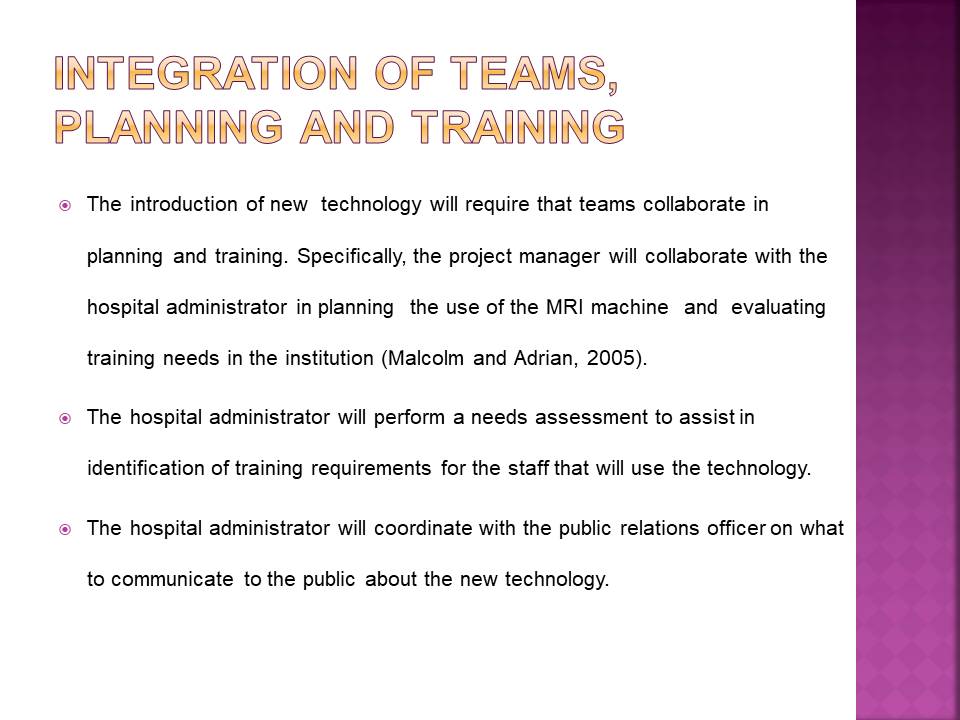
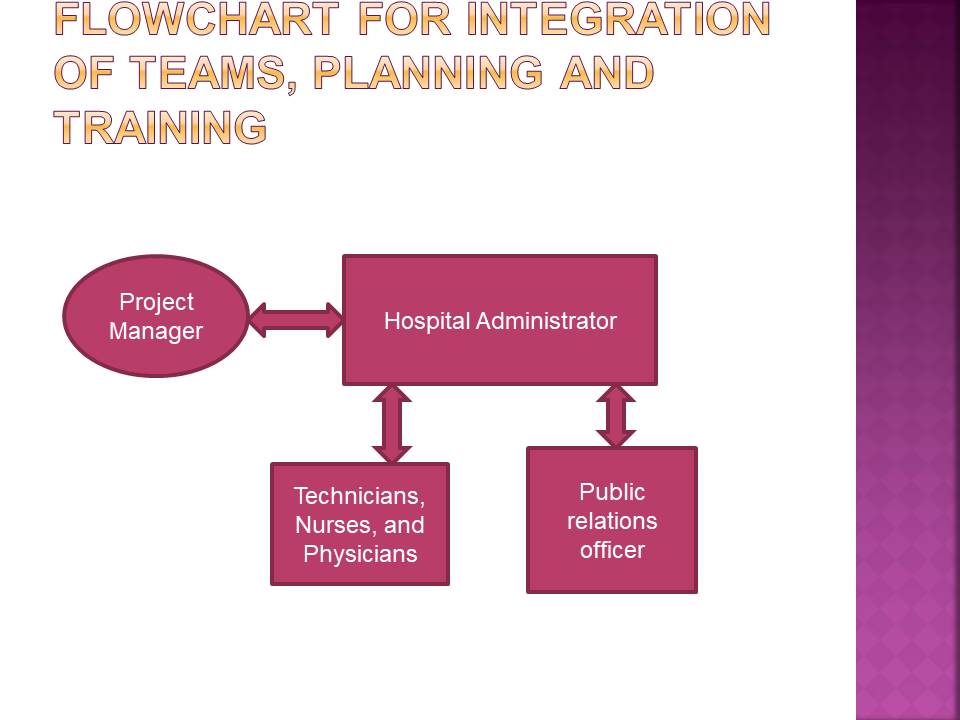
Potential Communication Obstacles
Language barriers will lead to ineffective communication to the public, in particular, in external communication, it will be necessary to create content in various languages to ensure that the message is understood by people with limited English language proficiency (Carl and Roethlisberger, 1991).
Cross-cultural nuances related to appropriate communication. Specifically, it will be essential to consider employees from diverse cultural groups perceive interpersonal communication.
The costs associated with placing advertisements on TV, radio, billboards, and newspapers could become a communication obstacle, if they exceed expenditure projections made by the hospital (Carl and Roethlisberger, 1991).
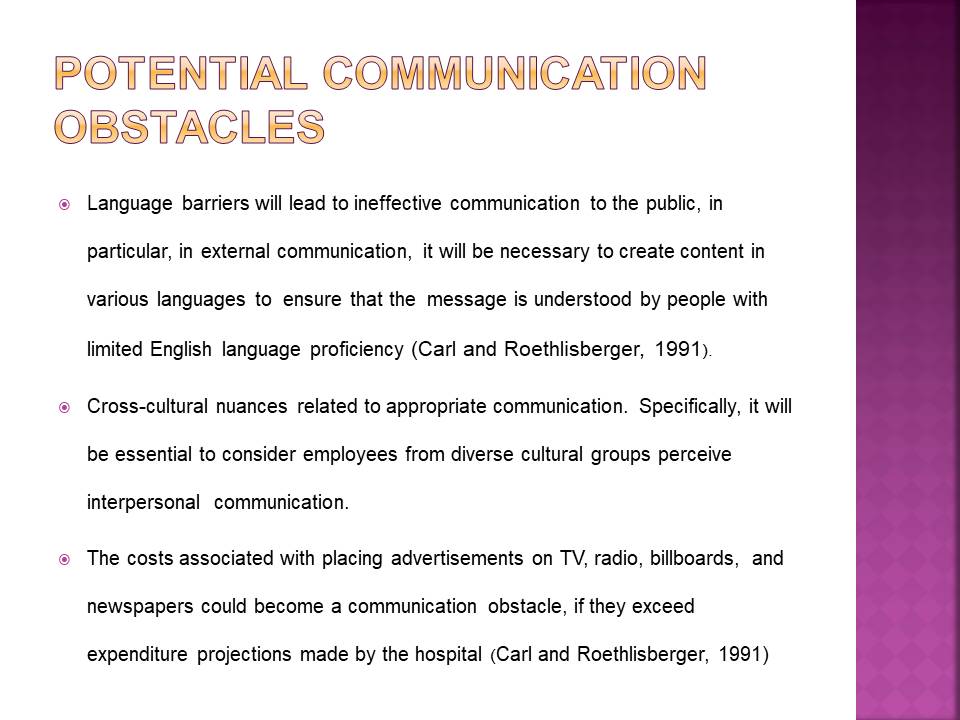
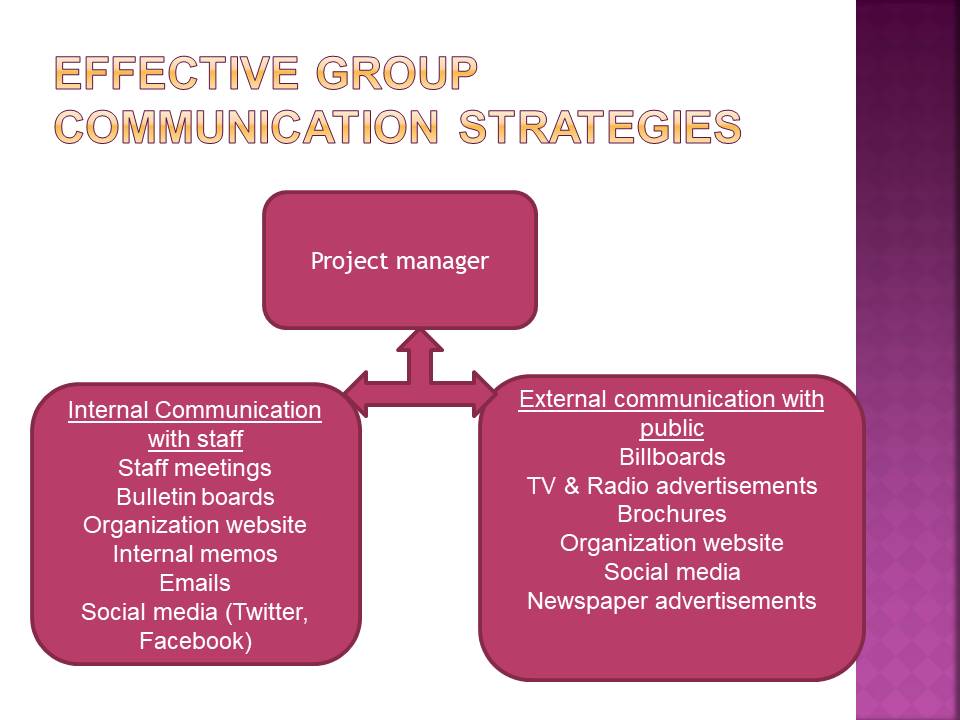
Media Opportunities
The use of a social media like Facebook will enable the hospital to get the feed back from the staff and the public on the information being relayed to them about the MRI.
The use of live debate such as an interactive TV Programme where viewers are allowed to ask questions and give their views will enable deeper understanding about the new technological machine by the targeted group (Malcolm and Adrian, 2005).
A blog that has both audio and written conversations will ensure that the targeted groups of people get and understand the information, this is because different people process written and spoken information differently.
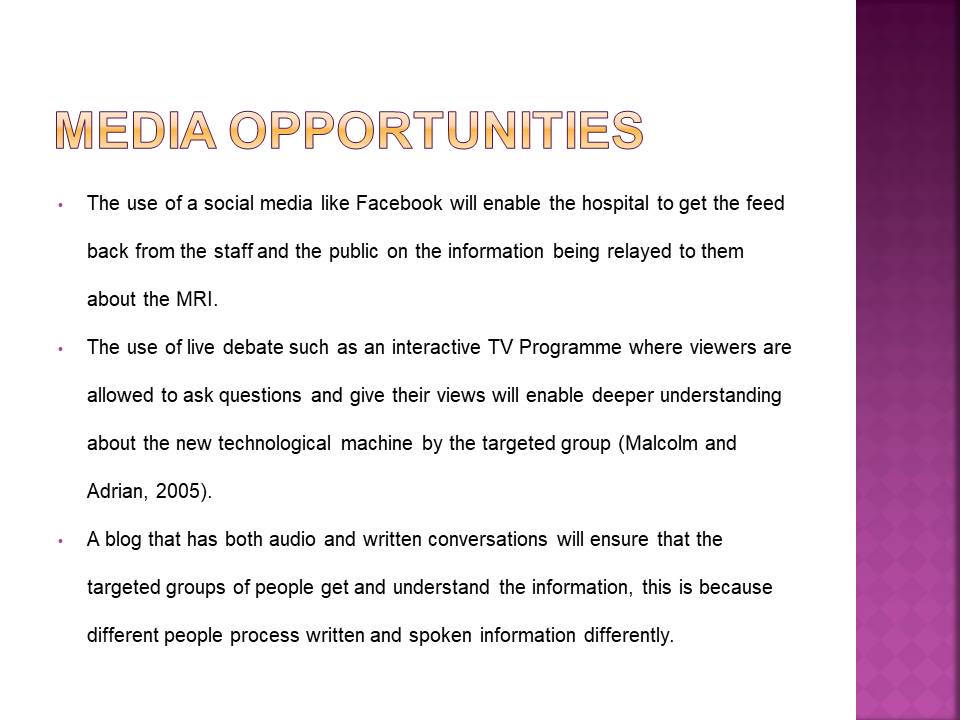
References
Carl, R. R. and Roethlisberger, F. J. (1991). Barriers and Gateways to Communication. Cambridge, MA: Harvard University Press.
Malcolm, M. and Adrian, P. (2005). Marketing Plans for Service Businesses. A Complete Guide. (2nd ed.) Butterworth, Heinemann Ltd Press.